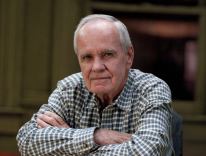Kate Atkinson’s novel Life after Life comes as something of a surprise. Her earlier books featuring a feckless Scottish detective, Jackson Brodie, were inventive in plot and quirky in characterization. There was little to suggest the rather heavy themes signaled in the epigraphs from Nietzsche and Plato that appear in Life after Life; they focus, appropriately enough, on reincarnation. The plan of the novel is simple: follow a character, Ursula Todd, through her lives. The plural, “lives,” offers the plot mechanism: Ursula is born once, but her days follow multiple sequences, the first being her still born birth. She survives more successfully in following permutations. We return to her birthday in February 1910 and accompany her as she, after two fatal sidesteps, finally arrives at adulthood and again we experience her different life courses. Chance, yes, is the impartial determiner.
The novel is a fictional experiment of sorts: how consistent is Ursula’s character when subjected to various conflicts? And indeed what are the responses of her family as she challenges them with different life experiences? There is the close sister Pammy, the cherished younger brother Teddie, the risqué and sophisticated Aunt Izzy, and a host of boyfriends, suitors, husbands and lovers. Ursula is consistently “rather pretty,” but various in her sexual precocity and fidelity. She is well-read enough to quote appropriately from the classics and to correct the pretentious in their misquotations.
As first I thought that Ms. Atkinson was allowing herself a great deal of novelistic slack: start out with one development of plot, find it goes nowhere, and then just start over again. No need to toss away all that is already written. Make a developmental virtue of laxity (avoid excision). But I had to admit that the layering effect of the plots broadened emotional development of the character, suggested the forces that shape or misshape personality and affect family bonds.
The primal scene of so much contemporary British fiction, the Second War and particularly the Blitz, occupies Ursula for a great deal of the book. (She dies once in a bomb blast.) Her life then is led against the extremes of wartime horror. She is both an English air raid warden and a naturalized German citizen, a friend of Ava Braun who marries a highly placed member of the Nazi party. In one incarnation she appears to assassinate Adolph Hitler. In another she is murdered by an abusive English husband. The teasing aspect of the plot is the “déjà vu” or sixth sense that the child Ursula appears to possess. As her psychiatrist, Mr. Kellet, suggests to her, she is an “old soul,” who has perhaps had many incarnations. She intuits from future lives the threats to her present life and the dangers that await those she loves. Her motivation in murdering Hitler derives in part from how she is to live in another life.
I confess I was prepared to dismiss the book as simply too artificial, and there are aspects of just that which persist – the scenes in Germany are least convincing – but the “experiment” itself works. There is a larger Ursula that emerges, and with her the sense of life in England over three decades. The perspective is that of the upper middle class, privileged and yet challenged, about to be shattered by the experience of the First War and social upheavals that take the servants from the “downstairs” and put cradle-to-grave socialism in place. Ursula’s mother Sylvie, at the start of the novel, is alive and percipient, clued to the presumptions of the age, but by the time of Ursula’s adulthood, Sylvie has changed for the worse, and the novelist dismisses her with a self-indulgent suicide. Hugh the father just misses the stereotypical strong, quiet presence – perhaps his affection for his ”little bear” saves him as a character but not from a heart attack. The novel offers a period piece that would find its place next to television dramas such as “Downtown Abbey” and “Foyle’s War.” But the book is more than this, and the multiple pot sequences appear to me to offer the distance, at once philosophical and thematic, that allows it to achieve something impressive.
This is an intriguing book; striking in its forced meditation on death, on the accidents of life, on the terrible sense of contingency that haunts us all at times. But in the end that dreaded “blackness” that descends in her multiple deaths never reaches the terror or the realization of Ivan Illych’s “black bag.” The alternatives and the recommencements take the sting out of death in ways not necessarily redemptive even if fertile ground for invention.
Please email comments to [email protected] and join the conversation on our Facebook page.
Share
Previous Story
Caught in the Gap
Next Story
Francis: Politics and Pilgrimage


